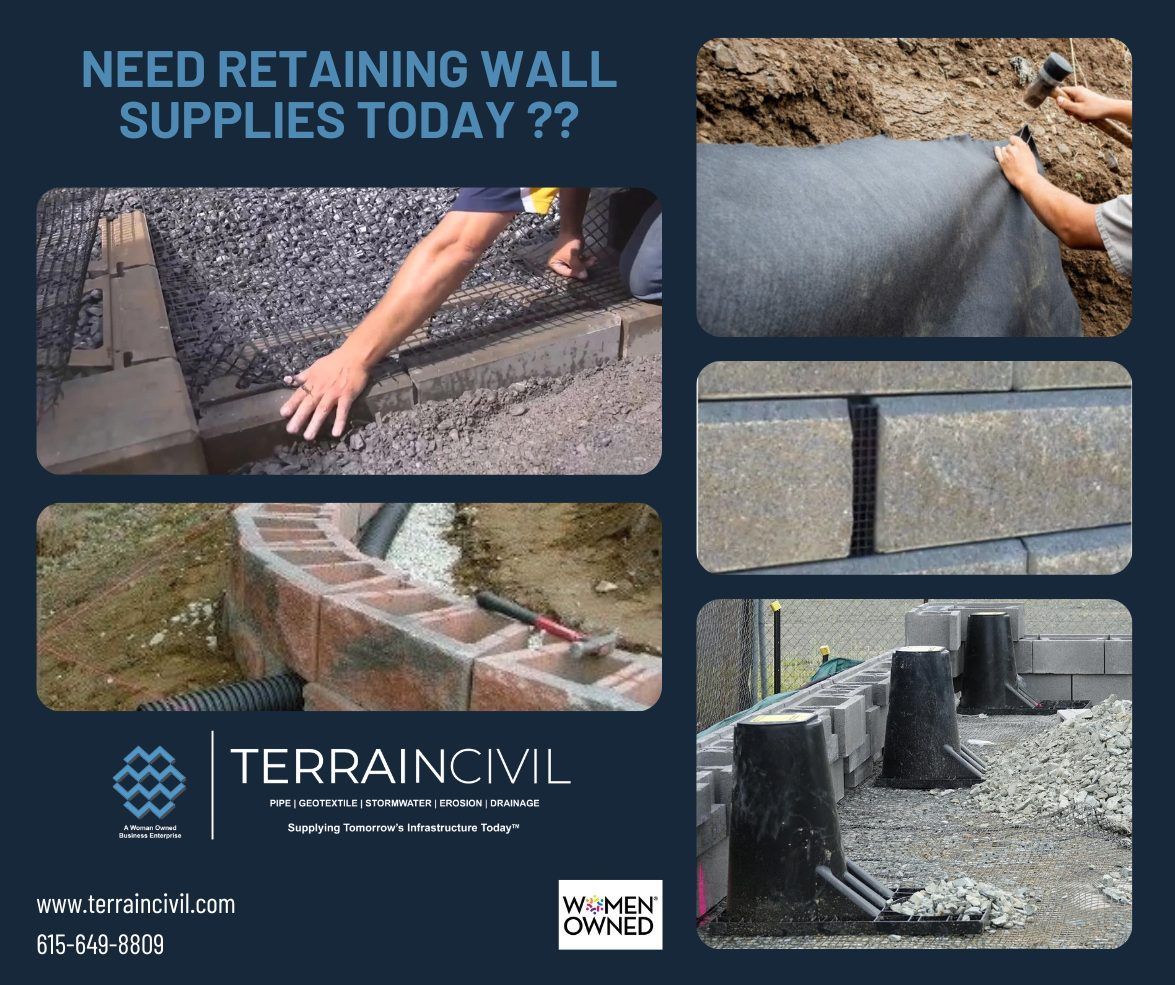How Geogrid, Geotextile and Proper Drainage Keep Your Walls Standing Strong

Mechanically Stabilized Earth (MSE) retaining walls are a trusted solution in site construction when it comes to managing grade changes, supporting roadways, or creating usable land on sloped sites. Their strength lies in a combination of engineered design and quality materials that work together to resist soil movement, control water pressure, and maintain long-term stability. Whether you’re working on a commercial project or a residential job, understanding the key components that go into a properly built MSE wall is critical.
At the heart of every stable MSE wall is geogrid, a synthetic reinforcement layer that is installed horizontally between compacted soil lifts. Geogrid effectively connects the wall face to the reinforced soil zone, distributing loads and increasing the mass and strength of the soil behind the wall. This reinforcement allows the wall to support greater heights and heavier loads than a gravity wall alone. The selection of the right geogrid—single or biaxial, depending on site conditions—is crucial to overall wall performance.
Behind the wall face, geotextile fabric serves a different but equally important function. It is typically used as a separator between native soil and drainage stone to prevent the migration of fine particles into the drain layer, which can clog the system and reduce effectiveness over time. Non-woven geotextiles are common for this purpose due to their filtration and drainage capabilities. By keeping materials separated, geotextile preserves the integrity of the drainage layer and helps prevent wall settlement or failure caused by water buildup.
Speaking of drainage, drain pipe installation is a step that can’t be skipped. A perforated drain pipe, usually wrapped in filter fabric, is placed along the base of the wall to collect and channel water away from behind the structure. Without this drainage system in place, water can build up and create hydrostatic pressure, which is one of the leading causes of retaining wall failure. To allow for proper water exit points along the wall face, many contractors are now incorporating Wall Drain Pro—a low-profile, engineered outlet designed to discharge water safely through the front of the wall while maintaining a clean aesthetic. Wall Drain Pro eliminates the need for unsightly PVC pipe outlets and prevents staining and erosion at the base.
When safety railings or fencing are required at the top of the wall—especially in commercial or public settings—Sleeve-It is the preferred method for pre-installing fence posts without compromising the wall structure. Installed during wall construction, Sleeve-It embeds directly into the reinforced soil mass and provides a code-compliant sleeve that eliminates the need to core drill or disturb the wall later. It’s a cost-effective, time-saving solution that meets safety regulations and ensures long-term stability.
If you’re building retaining walls in the Nashville or Middle Tennessee area, we have you covered. At Terrain Civil, we stock geogrids, geotextiles, drain pipe, Wall Drain Pro outlets, and Sleeve-It systems—all ready for pickup or delivery to your jobsite. These aren’t just add-ons—they’re the essential building blocks of a properly engineered wall that will stand the test of time.
Call us today at 615-649-8809 for pricing and availability. Our experienced team is ready to help you get the right materials for your next retaining wall project.
#TerrainCivil #MSEWall #RetainingWall #Geogrid #Geotextile #DrainPipe #Drainage #WallDrainPro #SleeveIt #NashvilleConstruction #MiddleTennessee #SiteConstruction #CivilConstruction #BuildItRight #CallForPricing



